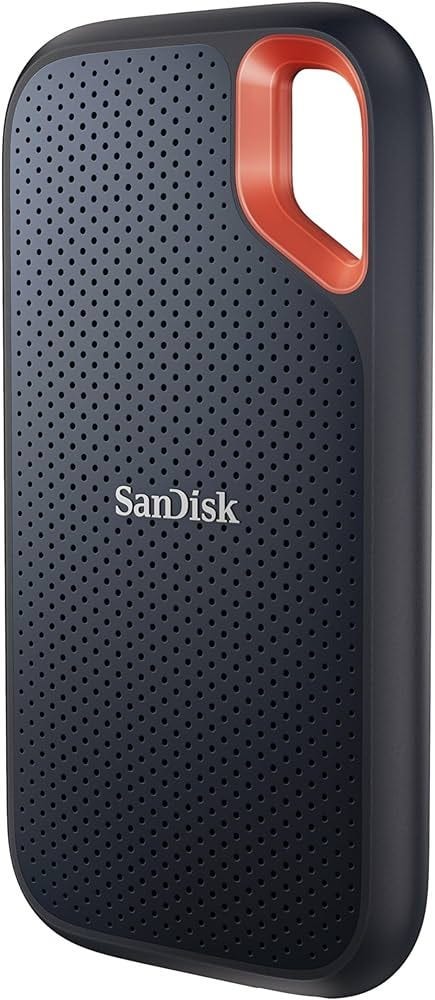Hello guys, if you are looking for the best Udacity courses and Nanodegree programs then you have come to the right place. In the past, I have shared the best courses from Udemy, Coursera, edX, Educative, Whizlabs, and CodeCademy and in this article, I am going to share the best online courses from Udacity to learn technical skills. You will find the best Udacity courses to learn Full stack development, Machine Learning, Deep Learning, Digital Marketing, as well many career-oriented courses to become a Product Manager, Data Analyst, and Software Engineers in 2026.
Java67
Learn Java and Programming through articles, code examples, and tutorials for developers of all levels.
Top 6 Programming Languages for Web development in 2026 (with Udemy Courses)
Hello guys, if you want to become a web developer in 2026 but not sure which programming language is best for web development then you have come to the right place. Earlier, I have shared the best web development courses and web developer roadmap, and today, I am going to talk about the 5 best programming languages for web development in 2026. Yes, that includes JavaScript. There is a saying about “right tool for the right job” and it very much applies to a programming language. Not all programming languages are designed the same and that’s why they are not equally good for everything.
ZTM Academy, Udacity, Frontend Masters & Whizlabs Black Friday–Cyber Monday SALE (50%–70% OFF)
Hello guys, Black Friday and Cyber Monday are always the best time of the year to invest in yourself , but this years tech learning deals are especially massive, with discounts ranging from 50% to 70% OFF across some of the world’s most trusted education platforms. Earlier, I have shared best Black Friday deals for developers and best Cyber Monday deals for programmers and here in this post, I will share best deals you can get to to level up your tech skills in 2026.
Top 25 Cyber Monday and Black Friday Deals for Developers and Software Engineers (Ending soon)
Hello guys, if you’re a developer like me, you already know that Black Friday isn’t just about gadgets and monitors anymore — it’s the best time to invest in yourself and your career growth. Every year, I take advantage of these early tech education deals to stack up courses, tools, and lifetime plans that keep me learning and growing throughout the year. Whether you’re preparing for tech interviews, leveling up your backend skills, mastering system design, learning AI/ML, or diving into cloud computing — this is your once-a-year chance to grab 50–80% discounts on platforms that cost thousands during the rest of the year.
Is ByteByteGo Lifetime Plan Worth it for System Design Interview? Review (2026)
Hello guys, when it comes to preparing for technical interviews, few challenges intimidate developers as much as system design. While coding interviews can be mastered with consistent practice and problem-solving drills, system design interviews require something far broader — architecture knowledge, scalability trade-offs, distributed systems intuition, and the ability to communicate clearly under pressure. This is exactly the gap ByteByteGo set out to solve. Founded by Alex Xu, the bestselling author of System Design Interview — An Insider’s Guide, and his team of seasoned engineers, ByteByteGo has built a reputation as one of the top platforms for mastering system design.
ByteByteGo, Codemia.io, and Exponent SALE - 3 Best System Design Subscription to Buy on Black Friday 2025
Hello guys, Black Friday and Cyber Monday is the best time of the year to invest in your career — and if you’re a developer preparing for technical interviews or leveling up your system design and problem-solving skills, this year’s deals are too good to ignore. I’ve personally tried all three platforms, I mean ByteByteGo, Codemia.io, and Exponent, and each offers something unique for developers preparing for FAANG level interviews or aiming to grow into senior or architect-level roles.
Why Join Coursera Plus this Black Friday? (40% OFF)
Hello guys, Black Friday and Cyber Monday, also known as Cyber week 2025 is here early. And Coursera just dropped one of the best deals of the year. Coursera Plus is now 40% OFF — just $240 for 12 months (regular price $399). But here’s the catch: this deal expires soon, and once it’s gone, prices return to normal. If you’re serious about advancing your career in AI, Machine Learning, Deep Learning, Data Science, or Cloud Computing, this is the moment to act.
10 Best Books and Developer Tools Programmers Should Buy on Amazon Black Friday 2025 SALE
Hello guys! Happy Thanks Giving and a big thanks for reading my blog, newsletter, and books. If you are wondering what to buy on this Black Friday, you have come to the right place. Earlier, I have shred best Black Friday Deals for developers for System Design, and now I am going to share 10 things you can buy on Amazon. Amazon’s biggest sale of the year, Black Friday 2025 is
here, and it’s the perfect opportunity to upgrade your developer
toolkit without breaking the bank. If you ask me, This is one event I
always wait for to shop the things I love.
I mostly shop electronics, books, gadgets like Kindle as well as thing which help me on development like best computers, best chairs, best head sets, and best tables and accessories.
In this post, I am going to share some of those things which I hope you can also find inspiration and useful and improve your productivity and working experience.
Remember, we spend most of our time in our chair, computer and desk and I strongly believe that this should be the best of the best.
Disclosure: some links are affiliate links and I may earn a commission with no extra cost to you. If you buy using my link thanks a lot for supporting.
10 Things Developers Can Buy on Black Friday SALE on Amazon
Here are 10 things Software developers and anyone working on Computers and digital worlds can buy this Black Friday to increase productivity and working experience
1. Books
I am a nerd, I read hundreds of books and I also buy a lot of books so I don’t miss any chance of buying books. I buy all kinds of books but most of my buys are technical books. If you need some inspiration here are my selected picks for this black Friday
Head First Software Architecture: A Learner’s Guide to Architectural Thinking
Software Architecture: The Hard Parts by Neal Ford, Mark Richards
AI Engineering: Building Applications with Foundation Models
2. High-Resolution Monitor
A good monitor can make a world of difference in your productivity. Look for deals on 4K or ultrawide monitors to maximize your screen real estate and enjoy crisp visuals.
If you need a recommendation, LG 34WP60C-B 34-Inch 21:9 Curved UltraWide QHD Monitor is my favorite, with stunning 4K resolution and excellent color accuracy, this monitor is perfect for detailed coding and design work.
3. Mechanical Keyboard
If you haven’t changed your keyboard for a long time then may be this is the best time to get a new keyboard. I suggest you should upgrade your typing experience with a mechanical keyboard.
They offer better tactile feedback, durability, and a satisfying typing experience that can enhance your coding sessions.
While there are many mechanical keyboards available on Amazon but if you need recommendation I suggest to try out MageGee Portable 60% Mechanical Gaming Keyboard, this keyboard offers a satisfying typing experience with tactile feedback, plus wireless connectivity for a clutter-free desk.
4. Ergonomic Chair
Comfort is key for long coding sessions. An ergonomic chair can help you maintain good posture, reduce back pain, and stay comfortable while working.
If you need a recommendation, GABRYLLY Ergonomic Mesh Office Chair is a good one. Renowned for its ergonomic design, this chair supports proper posture, reducing back pain during long coding sessions.
5. Noise-Canceling Headphones
You can eliminate distractions with noise-canceling headphones They are perfect for maintaining focus in noisy environments or during intense coding marathons.
I used to have a Bose noise cancelling head phones and I highly recommend it to anyone who need a noise cancelling head set but its bit expensive.
If you need slightly less expensive option then Soundcore Anker Life Q20 Hybrid Active Noise Cancelling Headphones.
These headphones deliver top-notch noise cancellation and sound quality, helping you stay focused in noisy environments.
And, if you need earbuds, this JBL Tune Buds is really good with noise cancelation feature and 48 hours of battery life.
6. External SSD
Speed up your development workflow with an external SSD. They offer fast read/write speeds, making them ideal for storing large projects and quickly transferring files.
There are many external SSD available in Amazon but my favorite is SanDisk 2TB Extreme Portable SSD. This portable SSD offers blazing fast read/write speeds, making it ideal for storing and transferring large projects efficiently.
7. Standing Desk
Alternate between sitting and standing to improve your health and productivity. While I found it tough to work or code while standing they are great to take calls or doing some light works.
If you want one then you should look for adjustable standing desks that offer flexibility and ease of use and if you need a recommendation ErGear Height Adjustable Electric Standing Desk is a great one.
This adjustable desk allows you to switch between sitting and standing, promoting better health and productivity.
8. High-Quality Mouse
If you haven’t changed your mouse for quite some time then Black Friday is a great opportunity. If you need a wireless mouse then Logitech M185 Wireless Mouse is a very affordable one.
IT is a reliable and budget-friendly option, providing smooth and precise tracking for everyday computing tasks.
Its comfortable, ambidextrous design makes it a great choice for both right and left-handed users. This mouse is a top choice for developers. I use it everyday.
9. Smart Home Devices
Enhance your home office with smart home devices like smart bulbs, thermostats, or voice assistants. These can help create a comfortable and efficient working environment.
For example, Google Nest Mini 2nd Generation Smart Speaker with Google Assistant is a compact and affordable smart speaker with Google Assistant built-in, offering hands-free control of your smart home devices and access to your favorite music, news, and more.
Its improved sound quality and enhanced voice recognition make it a valuable addition to any smart home setup.
10. Portable Monitor
A portable monitor can be a game-changer for developers who work on the go. They are lightweight, easy to set up, and provide extra screen space for multitasking.
While you can find many portable monitor from Acer, Asus, I personally like KYY Portable Monitor 15.6inch 1080P FHD. It is lightweight and easy to set up, this portable monitor is perfect for developers who need extra screen space on the go.
That’s all about my 10 things you can buy this Black Friday and Cyber Monday to improve your developer experience. I think investing in things you use daily is the best investment and now you can buy same stuff with lessor price.
Don’t miss out on these great deals to enhance your development setup. Share your favorite Black Friday finds and deals in the comments below!
Happy Black Friday and Thanks Giving in advance!!
And, if you need more deals, here are the best Black Friday deals I have curated for developers:
P. S. - On this Black Friday, I’m offering 35% OFF annual subscriptions. If you always wanted to join this is the best price you can join, its just $2 per month, less than a cup of coffee. Price will increase after Black Friday.
Exponent Black Friday Deal 2025 (40% OFF) and 7 Best Courses for Technical Interviews in 2026
Hello guys, In today’s really tough and competitive tech job market, thorough preparation is key to acing your interviews. It has become seriously hard to get a job for senior and mid senior level and I know many people who are in the market but not getting any calls or offers. That’s why its important that you make the most of the few opportunity you get and you should not leave any stone unturned.
In
this kind of market, companies also become choosy as they have lot of
talented individuals who are interviewing for same jobs. Hence, you need to go extra mile when it comes to preparation and choosing the right resources is utmost important for that.
Can you Crack FAANG System Design Interview with ByteByteGo? Review
Hello guys, breaking into FAANG (Facebook/Meta, Amazon, Apple, Netflix, Google) or other top-tier tech companies has become one of the most competitive challenges in software engineering. Candidates face multiple rounds of coding challenges, system design interviews, machine learning design discussions, and increasingly even Generative AI and OOP design problems. With stakes this high, it’s no surprise that countless prep platforms, books, and courses promise to help you land the job. Among them, ByteByteGo — created by Alex Xu (author of System Design Interview — An Insider’s Guide) — has rapidly emerged as one of the most popular and trusted resources.
Don’t Write Brittle Unit Tests — Focus on Behavior, Not Implementation
Hello guys, If you’ve been writing unit tests for a while, you’ve probably experienced test brittleness — those fragile tests that break every time you refactor, rename a method, or restructure your code, even though the actual behavior hasn’t changed. These tests slow you down, destroy confidence, and turn your test suite into a maintenance nightmare.
Stop Shipping Bugs: Why Every Team Needs an AI Reviewer in 2025
Hello guys, It was Tuesday morning when the Slack notification appeared, "Production is down. Database migration failed. We're losing $15,000 per minute." The developer who shipped the code felt sick. The code review passed. The tests passed. Nobody caught the edge case. Nobody caught the subtle bug that only manifests under specific database conditions. By the time they rolled back, the damage was done. Lost revenue. Lost customer trust. Lost sleep. While this story is fictional the situation is real and we have seen it manifest on different place in different shape.
Difference between @AutoWired and @Qualifier in Spring Framework?
Hello guys, if you are preparing for Spring Framework or Spring Boot interviews then you should always prepare comparison questions like what is difference between @Qualifier and @AutoWired annotation in Spring? This kind of questions are good to demonstrate not only your knowledge but also how well you understand them and its also your chance to impress the interviewer. In the past, I have answered @Bean vs @Component and @Controller vs @RestController annotation and in this article, I am going to explain you the difference between @Autowired and @Qualifier in Spring Framework.
How to Solve "Error starting Application Context" in Spring Framework?
Hello guys, Spring Boot is a popular framework for building Java applications, providing a streamlined development experience. However, like any software, Spring Boot applications can encounter errors during startup. One common error that developers may encounter is the "Error starting ApplicationContext" error. This error typically indicates an issue with the application's configuration or dependencies but it's really hard to find what exactly is wrong and how to fix it. In the past, I have shared tips on how to fix error creating bean error and In this article, we will explore various solutions to fix this error and ensure a successful startup of your Spring Boot application.
Top18 Spring Cloud Features for Microservices Architecture in Java
Hello guys, If you are doing Java development using Spring Boot then you may already know that Spring Cloud is a popular open-source framework for implementing microservices in Java. It provides a wide range of features that simplify the development, deployment, and management of Microservices in Java. In this article, we will discuss some of the key features of the Spring Cloud framework that makes it an excellent framework for developing Microservices in Java. Microservices architecture is a modern approach to building complex applications as a collection of loosely coupled, independently deployable services.
What is Backend for front-end pattern in Microservices? How to use it? Example Tutorial
Hello guys, as Organizations embrace Microservices architecture, the need for efficient communication and collaboration between front-end and back-end teams becomes crucial. To address this, the Backend for Front-End (BFF) pattern has emerged as a valuable approach. BFF pattern allows front-end developers to have dedicated back-end services that cater specifically to their needs, enabling them to build user interfaces more effectively. In the past, I have shared several Microservices design patterns like Event Sourcing, SAGA, Database Per Microservices, CQRS, API Gateway, Aggregator Design Pattern, and also shared best practices to design Microservices and in this article, I am going to talk about the Backend for Front-End pattern entails and how to effectively utilize it in microservices architecture.
What is Circuit Breaker Design Pattern in Microservices? How to implement it?
Hello guys, Microservices design patterns are very important concepts for Java developers to learn, not just to create a robust, scalable, and high-performance Microservice architecture but also to do well on Java developer interviews. In the past, I have shared several Microservices design patterns like e Event Sourcing, SAGA, Database Per Microservices, CQRS, API Gateway, and also shared best practices to design Microservices and in this article, I am going to talk about Circuit-Breaker Design Pattern, and how you can implement in Java using Spring Cloud Framework. This is not just an important Microservice Pattern but also a popular Microservice question which I have also mentioned earlier in my article about 15 Microservices questions for Interviews. If you haven't read that article yet, I suggest read it, especially if you are preparing for Java and Microservice interviews.
What is @Conditional annotation in Spring Framework? Example Tutorial
Hello guys, if you want to know what is @Conditional annotation in Spring Framework and Spring Boot, and how to use it then you have come to the right place. Earlier, I have shared best free courses to learn Spring Framework and Spring Boot, and in this article, you'll learn what they are, how to use them with practical examples. Spring 4.0 introduced the @Conditional annotation that is used for conditional checking for bean registration. This annotation offers more support than the @Profile annotation provided by the spring framework and most of the Spring Boot matching is attributed to this annotation. It allows you to setup features based upon certain conditions like presence of a class in classparth or a JAR File which is how Spring Boot Auto-configuration works.
Difference between @Controller vs @RestController in Spring Framework
Hello and welcome to the blog post. If you are preparing for Java or Spring Boot
interview, you may have come across this topic. In this article, we are going to
have a look at the difference between @Controller and @RestController
annotation. Let's understand with the help of an example.
Spring Framework is a popular open-source application framework that provides infrastructure support for developing Java applications. One of the essential components of Spring Framework is the controller, which is used to handle HTTP requests and provide responses to clients. In Spring, there are two types of controllers: @Controller and @RestController.
Spring Framework is a popular open-source application framework that provides infrastructure support for developing Java applications. One of the essential components of Spring Framework is the controller, which is used to handle HTTP requests and provide responses to clients. In Spring, there are two types of controllers: @Controller and @RestController.
Difference between @RequestParam and @PathVariable in Spring MVC
Hello guys, if you are wondering what is difference between @ReqestParam and @PathVaraible annotation in Spring MVC, most likely because it was asked to you on a Java and Spring interview or maybe you are just curious then you have come to the right place. In the past, I have talked about difference between @Component, @Service, @Reposistory and @Controller annotations and in this comprehensive article we are going to take an in-depth look at the difference between the two most frequently used annotations in Spring MVC. It provides two commonly used annotations, namely @RequestParam and @PathVariable, which play a significant role in parameter handling within web applications.
Subscribe to:
Comments (Atom)










